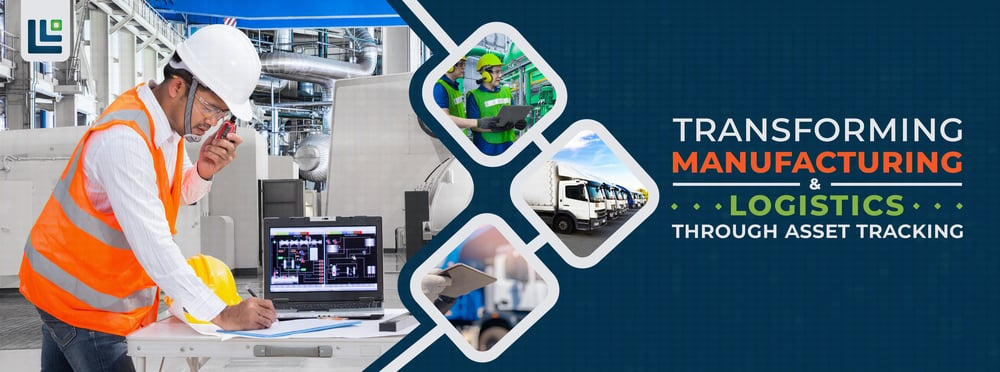When people think about automation, they usually think about an increase in productivity and a decrease in human support. However, within manufacturing, much of automation’s value in increased productivity results from how it promotes employee satisfaction. Automation can communicate many things to workers when used in the correct contexts, making them feel valued, safe, and assured of job security. If this is the case, why do many people mistake automation as a threat? We’ll look to dismantle the myth of robots taking over while providing compelling reasons that automation can help improve employee satisfaction and retention.
.webp?width=750&height=501&name=unnamed%20(30).webp)
Automation as Human Augmentation
First, we must address the myth that automation will inevitably lead to fewer employment opportunities within manufacturing. Although given the technology, it is not inaccurate to assume that machines could take over certain functions; it is increasingly evident that this is not the path that companies are looking to take. Instead, most development efforts and resultant implementations are going towards a brand of automation called “human augmentation,” which seeks to improve the experience of workers and help them excel in their positions.
There are multiple definitions of human augmentation. The first and perhaps better known definition refers to the general enhancement of basic human capabilities through technology, whether physically or mentally. This is seen a lot in science-fiction and exploratory technologies, as well as the controversial and indistinct concept of a prospective “human 2.0” where all humans have technological integration. This is worth noting simply because this is not the definition of “human augmentation” being utilized, even though it is usually what people think of first.
The definition of human augmentation being used here is far more grounded in reality and reasonable application – it simply refers to the use of technology to assist in a given task. For instance, self-parking cars can be considered forms of human augmentation, as they assist in driving. Human augmentation is directly related to workspace augmentation, which is similarly defined as the use of technology to make an area easier to navigate and utilize toward an industrial end.
Automation is a form of human augmentation, as are most forms of industrial IoT. This technology assists in the production process rather than completing the task independently. For example, asset tracking automates database maintenance. While database maintenance is not a direct step in the production process, it is a necessary step to help workers complete the production process efficiently. Human augmentation may also allow automation to take over small steps in a larger task, such as fixing fasteners in place or sealing packaging. It is not completing the process on its own, but it assists with certain elements of a task so the worker can complete the overall task with greater speed and efficiency.
Increase Your ROI by Investing in AirFinder OnSite
- Low Cost. AirFinder OnSite XLE is a fraction of the cost of competitors' pricing.
- Long Battery Life. XLE lasts up to 7 years with hundreds of location updates daily.
- Increased Efficiency. Spend less time looking for assets, and more time being productive.
How Automation Promotes Employee Satisfaction
Automation can help promote employee satisfaction in a number of ways, which further ensures employee retention and productivity. Some ways automation leads to employee satisfaction include:
Reducing menial tasks.
One of automation’s most prominent services to employees is how it reduces menial tasks. Every job has its unsavory aspects, the ones that workers weren’t necessarily hired for but are the natural byproduct of their day-to-day operations. These tasks are often entrusted to them because they are in some way related to the worker’s primary function, even if it’s not a direct step in the actual process. Too many tedious, often repetitive tasks can make workers feel undervalued.
Companies can use automation to reduce the number of repetitive tasks employees have. Repetitive tasks are easy to automate; thus, they’re often the first choice when implementing any IoT technology. By automating these tasks, workers are given more time to focus on the tasks they were hired to fulfill. Automating simple tasks promotes efficiency and the sense that the work they are capable of is valued.
Enforcing worker safety.
Employees express higher satisfaction with companies that promote worker safety. Manufacturing plants can be dangerous places filled with heavy equipment and areas that are better off with restricted access. This is not to say that workers aren’t aware of the risks or capable of taking care of themselves and the people around them. However, the fact is that plants are also incredibly busy, and despite best efforts, there’s always the possibility of something being overlooked and leading to disaster.
Automating access systems and maintaining visibility of potentially dangerous equipment improves overall workplace safety. You can restrict access to specialized tools and equipment to only those with proper training. Automation can additionally be used to alert workers when the floor needs to be cleared.
Communicating company growth.
Automation also improves employee satisfaction by communicating company growth. When a company is growing, workers are more likely to feel assured of their performance and long-term job security. This assuredness improves employee job satisfaction and creates a positive feedback loop that helps improve employee performance. Employee satisfaction can also increase employee retention, a substantial benefit in the current labor shortage.
Implementing automated systems shows an awareness of growing competition within the manufacturing industry. Technology helps guide a company’s growth, so implementing IoT systems communicates that a company is growing, staying up to date with increasingly standardized tech standards.
Asset Tracking as Automation
Asset tracking systems provide a form of automation. These solutions automate location and condition monitoring by providing full visibility. With an asset tracking solution, workers can know where tools, equipment, inventory, or WIP products are located without requiring manual input or tedious manual searches. Additionally, this system provides automated data on how long an asset stays in one place, which can also help provide vital information that can inform the decision-making process without requiring manual compilation and synthesis.
Link Labs provides an automated asset tracking system designed to improve process efficiency and employee satisfaction in the manufacturing industry. We work with companies to provide the best solution for their goals, scope, and budget while allowing room for expansion. If you would like to learn more about our product and the benefits it provides, book a demo with us today.





